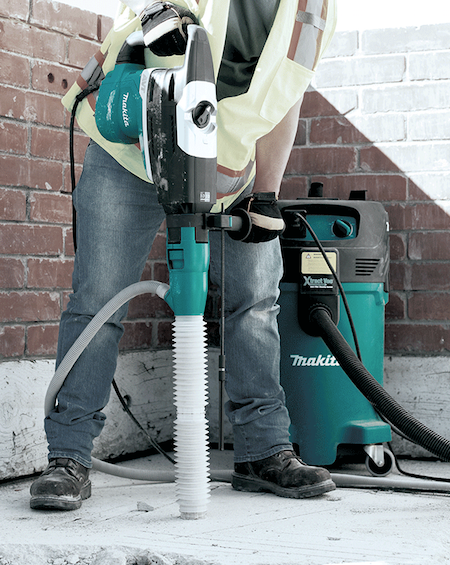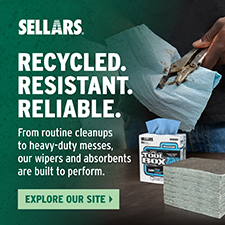Makita offers OSHA silica compliance resources
Help your customers comply with the new rules.
 Today there is new demand for more solutions to reduce concrete silica dust on the job site. Makita has an expanding dust extraction system with vacuums, accessories and attachments for use in concrete drilling, breaking, surfacing and cutting applications.
Today there is new demand for more solutions to reduce concrete silica dust on the job site. Makita has an expanding dust extraction system with vacuums, accessories and attachments for use in concrete drilling, breaking, surfacing and cutting applications.
Makita provides the options users need to build an OSHA compliant system for their job sites, even if work takes them away from a power source. Makita, a leader in cordless technology, aloows users to build systems powered by 18V LXT batteries and benefit from the expansive breadth-of-line of the world’s largest 18V cordless tool system.
For users with access to a power source, Makita corded dust extractors combine top performance metrics with lower noise, less weight and longer service life.
OSHA RULE 29 CFR 1926.1153
OSHA is amending its existing standards for occupational exposure to respirable crystalline silica. OSHA has determined that employees exposed to respirable crystalline silica at the previous Permissible Exposure Limits face a significant risk of material impairment to their health.
The evidence in the record for this rulemaking indicates that workers exposed to respirable crystalline silica are at increased risk of developing silicosis and other non-malignant respiratory diseases, lung cancer, and kidney disease. This final rule establishes a new permissible exposure limit and Specific Exposure Control Methods.
COMPLIANCE SCHEDULE
Standards took effect on June 23 of 2016, after which industries must comply, based on the following schedule:
- Construction - September 23. 2017, 15 months after the effective date.
- General Industry and Maritime - September 23, 2018, two years after the effective date
KEY PROVISIONS OF OSHA RULE 1926.1153
- Reduces the permissible exposure limit (PEL) for respirable crystalline silica to 50 micrograms per cubic meter of air, averaged over an 8-hour shift.
- Requires employers to: use engineering controls (such as water or ventilation) to limit worker exposure to the PEL; provide respirators when engineering controls cannot adequately limit exposure; limit worker access to high exposure areas; develop a written exposure control plan and train workers on silica risks and how to limit exposures.
- Provides flexibility to protect workers from silica exposure and provides medical exams to monitor highly exposed workers.
Employers can apply 1 of 3 options for compliance: Option 1 Specified Exposure Control method provided in Table 1 of the standard or Alternate Exposure Control methods options 2 and 3 which both require workers' exposure to silica to be below the Permissible Exposure Limit.
Click the link here for more information on methods of compliance, dust control system selection tools and additional references from Makita and OSHA.














